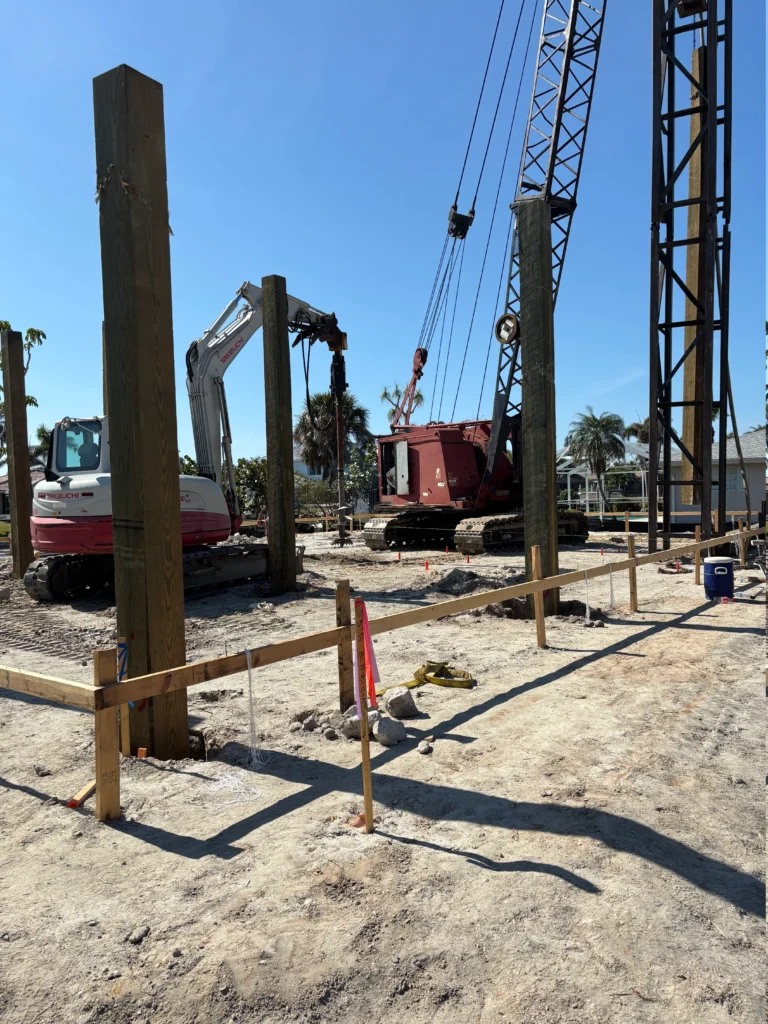Pile and Piling in Construction
A pile is a long, slender structural element made of concrete, steel, or timber. It helps transfer building loads to stronger soil or rock layers, ensuring stability. In simple terms, piling refers to the process of installing these piles into the ground to provide essential structural support.
Types of Piles
To better understand piling, there are several types of piles, each designed for different soil conditions and structural needs:
- First, End-Bearing Piles transfer loads directly to strong soil or rock layers, providing firm support.
- Next, Friction Piles rely on surface friction to distribute loads into weaker soil when no solid layer is available.
- Finally, Combination Piles use both end-bearing and friction mechanisms for enhanced load transfer and stability.
Piling Methods
The choice of piling method depends on several factors, including soil type, project size, and environmental conditions. Some of the most common techniques include:
- One common method is Driven Piles, where workers hammer or vibrate steel, concrete, or timber piles into the ground to achieve the required depth.
- Another effective technique is Bored Piles (Drilled Shafts), which involves drilling holes and filling them with concrete, making it ideal for deep foundations.
- For faster installation, Screw Piles are rotated into the soil using specialized machinery.
- In cases where space is limited, Micro Piles provide additional support by reinforcing existing foundations in constrained areas.
Advantages of Piling
Piling offers several benefits that make it essential for many construction projects:
- Most importantly, piling supports heavy structures even on weak ground.
- Additionally, piles prevent settlement and potential foundation failure over time.
- This piling method is also effective in areas with high water tables, ensuring long-term stability.
- Furthermore, certain piling techniques reduce vibration and noise, minimizing disruption to surrounding areas.
Common Uses of Piling
Due to its versatility, piling is used in a variety of construction projects, including:
- For instance, piling is essential for high-rise buildings constructed on soft or unstable soil.
- Similarly, piles provide deep foundation support for bridges handling heavy loads.
- In marine environments, piling is critical for offshore structures such as oil rigs and wind turbines.
- Lastly, piles reinforce retaining walls and underground tunnels, preventing structural failure.
Conclusion
In summary, piling plays a critical role in ensuring the strength and durability of structures in challenging soil conditions. Engineers carefully select the most suitable pile type and piling method based on soil type, load requirements, and project needs.
For more information, visit stovallpile.com.


